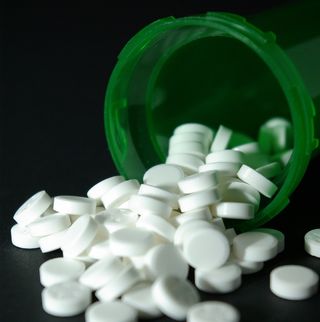Addiction
Physical Dependence Is Not Addiction
Why taking prescription pain medications doesn’t make you an addict.
Posted February 26, 2018
As the opioid epidemic has picked up wide spread national media attention, so has patient awareness on the topic. One to two years ago when I would try to discuss the ongoing epidemic with patients, they would look at me with a surprised look, like I didn’t know what I was talking about. Now I find patients are more aware of what is going on and at times will bring up the topic to discuss it with me. Typically the conversation will start out like this:
“Doc, I see news reports on the opioid crisis all the time. I feel like I need these pills and they help me. Am I an addict? Am I who they are talking about?”

Unfortunately, the media has done a poor job of educating the public on truly what is the issue at hand. All prescriptions do not lead to addiction. All patients are not addicted to pain medications. In fact, the majority of patients who take chronic pain medications are not addicted to them at all. The media coverage has left chronic pain patients feeling like they are labeled as “addicts” if they regularly take pain medications as prescribed.
Don’t get me wrong, the opioid addiction is the public health epidemic of our time. Prescription opioids used for pain management are contributing heavily to this crisis. Apart from physician education about optimal pain management and mindful prescription practices, there is an ever-increasing need for patient awareness about the risk involved when taking opioids for pain management. Patient literacy in this regard can be helpful in fostering a strong physician-patient relationship which is crucial for optimal pain management as well as minimizing the risk of addiction. Patient awareness should include signs and symptoms of opioid addiction, pseudo-addiction, and physical dependence. This can eventually help patients to avoid or identify an addiction in very early stages so that they can seek appropriate help.
So what am I getting at? Patients need to understand what opioid addiction is, what pseudo-addiction is, and what physical dependence is. Most if not all patients with chronic pain are physically dependent, not addicted, to their pain medications.
Let’s take a closer look at addiction, pseudo-addiction, and physical dependence.
Opioid Addiction:
Opioid addiction involves using these medications in larger quantities than as prescribed or for non-medical reasons. The patient will crave the medication and will have difficulties controlling how much they take. There is a persistent desire or unsuccessful effort to cut down or control the use of the medication by the patient. These behaviors result in significant social and occupational impairment.
Pseudo-Addiction:
Pseudo-addiction also involves opioid-seeking behavior but the motivation is to get optimal pain relief. Due to involvement of drug-seeking behavior and/or overtaking the medication, it is very difficult to distinguish it from opioid addiction. Due to subjective nature of pain reporting, it is challenging to address let alone diagnose this condition.
Physical dependence:
Opioids have an extraordinary ability to develop tolerance. Pain medication dosage has to be increased over time to maintain pain relief. Patients should be aware of this and try to use other treatment modalities to reduce their reliance on pain medications for longer periods of time. Once a patient has become physically dependent, stopping the use of the medication will lead to withdrawal symptoms (i.e. muscle aches, restlessness, anxiety, inability to sleep, excessive sweating, abdominal cramping, diarrhea, nausea, vomiting, and elevated blood pressure). The key difference between tolerance and addiction is the fact that tolerance will develop over a period of time at any physician prescribed dosage.
The majority of my patients who take pain medication are physically dependent on them, not addicted. Patients should not feel victimized if they are taking a reasonable prescription, adhering to the label, and finding improvement in their lives. The recent media attention to opioid prescriptions as a whole has been understandably negative, but there is a role for them so long as they are prescribed and taken properly. Patients should not feel that the doctor suggesting them as an option for pain management is not trustworthy so long as the prescription is minimal and they understand the signs of addiction. They also should not feel shamed or stereotyped by the public.
At the end of the day, if you are taking your prescription opioids as prescribed, and they are helping you achieve more in your daily life, you should feel confident in your treatment plan. Don’t let broad media reports sway you from what you and your doctor have determined to be the right course of action for you.


